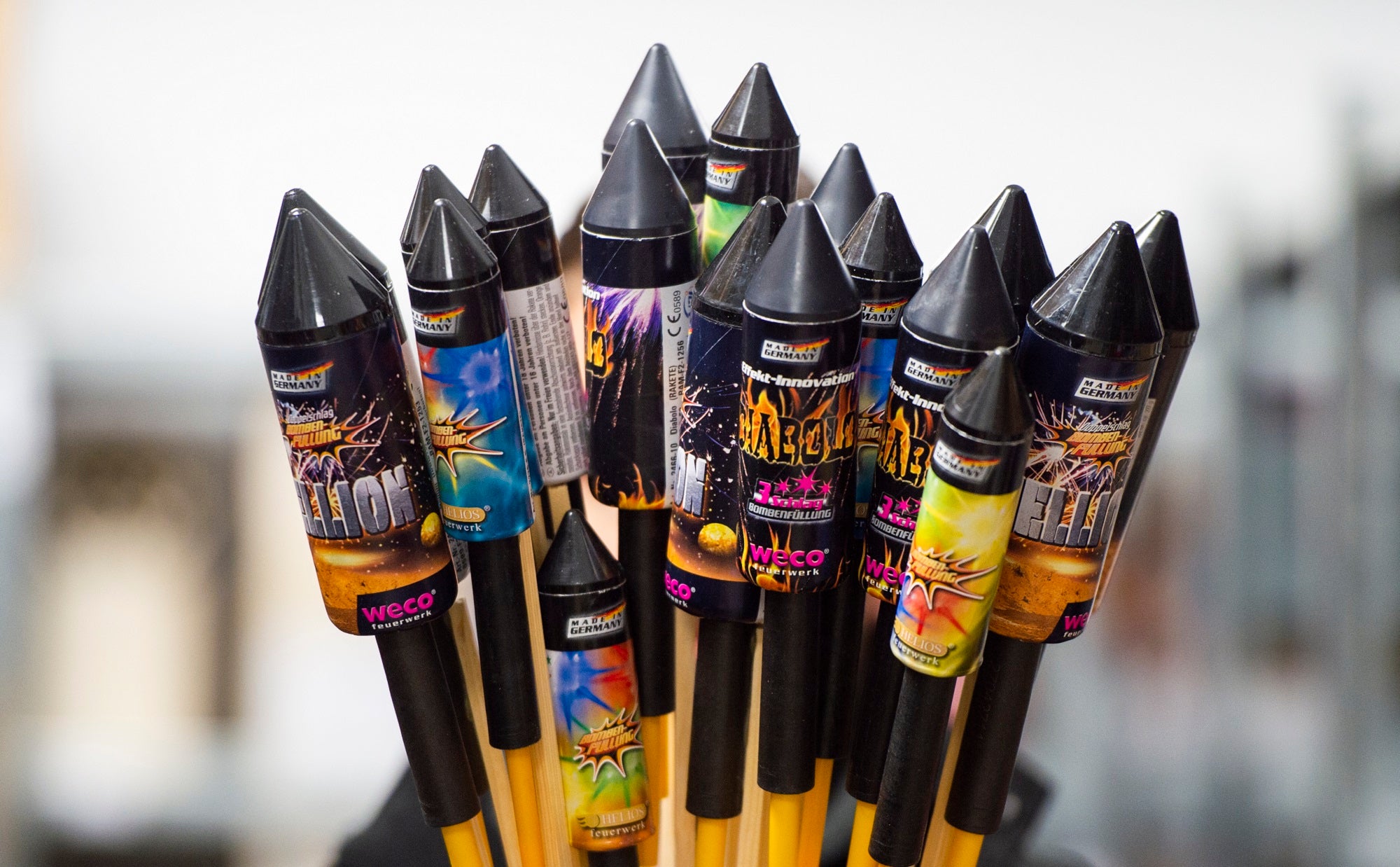During all sorts of major celebrations, people around the world often anticipate the bursts of color and sounds of crackling explosions of fireworks displays. But no matter how entertaining they are, their environmental impacts should not be overlooked. Each firework shoots off light, noise, and particulate pollution that may affect wildlife behavior and trigger respiratory problems, allergies, and PTSD in people. To avoid harmful health and environmental effects, it’s important to explore greener, safer alternatives to fireworks.
How fireworks affect the environment
The explosions you see in fireworks are chemical reactions. They contain oxidizers like perchlorates and nitrates that break down chemical bonds in the fuel source, which could be charcoal-based. Metals like copper, strontium, and barium are added to produce color.
When fireworks explode, they release sulfur dioxide, particulate matter, and heavy metals into the atmosphere, says Gwen O’Sullivan, an environmental chemist and department chair of earth and environmental science at Mount Royal University in Canada. They can rapidly deteriorate air quality, especially in areas with concentrated displays. Inhaling these pollutants can be particularly harmful to people with respiratory conditions, O’Sullivan adds.
A 2015 study in the journal Atmospheric Environment found that Fourth of July fireworks increase particulate matter concentrations by an average of 42 percent across the US. Although the levels generally diminish the next day, the temporary increase in air pollution can be dangerous.
“These substances can be deposited from the atmosphere into water bodies, causing adverse effects on aquatic life and overall water quality,” says O’Sullivan. Some chemicals, like perchlorate, may leach into water bodies and be absorbed by plants. They can then possibly be consumed by wildlife and enter the food chain.
[Related: How to comfort pets and babies during fireworks]
Aside from releasing chemicals into the environment, fireworks are also a source of short-term sound and light disturbance. Over the years, New Year’s Eve fireworks in Europe have been observed to cause a variety of impacts on bird life, including a sharp and sudden decline in Eurasian magpies’ roost size, a 26 to 35 percent drop overnight in swan, goose, and duck numbers on Lake Zurich, and the evacuation of thousands of birds in the Netherlands. The ecological impacts of firework noise may also influence wildlife breeding outcomes.
“While light and sound can be fleeting, they still have a profound effect on wildlife and [on] us,” says Bill Bateman, associate professor in the School of Molecular and Life Sciences at Curtin University in Australia. “The air [pollution] and subsequent soil and water pollution can be considerable and long lasting.”
 Fireworks rockets at a manufacturer’s storage facility in Germany. Christophe Gateau/picture alliance via Getty Images
Fireworks rockets at a manufacturer’s storage facility in Germany. Christophe Gateau/picture alliance via Getty Images
Safer firework alternatives for any holiday
With all the emotions and nostalgia surrounding fireworks shows, it can be challenging for people to explore other options, says O’Sullivan. Choreographed light displays, like drone and laser shows, may preserve the visual allure of the celebrations. “Drones are increasingly being used in place of fireworks due to their advantages of producing no harmful smoke or chemicals, being reusable, and their ability to be programmed for intricate aerial formations,” O’Sullivan adds. Places like Salt Lake City, Utah and Boulder, Colorado have replaced traditional fireworks displays with drone shows for the Fourth of July.
In India, some people are switching to “green crackers,” which refers to fireworks or firecrackers made with a smaller shell size and reduced usage of raw material in the overall composition. They may also involve the use of additives like dust suppressants that reduce emissions. These green crackers are estimated to reduce particulate matter pollution by 30 percent. However, manufacturing fireworks with lower levels of heavy metals and no perchlorate tends to be costly.
Additionally, although environmentally friendly fireworks that replace structural parts and chemical ingredients to reduce the release of smoke, metals, and perchlorates do emit fewer pollutants, “their specific impact on air quality has not been thoroughly evaluated,” says O’Sullivan. More research is necessary to look into the benefits of eco-friendly fireworks over conventional ones.
[Related: Host a sustainable affair with these environmentally-friendly tips]
Simple party poppers or confetti cannons filled with biodegradable materials like water-soluble rice paper may be a more accessible, fitting replacement for fireworks. Families might also enjoy bubble guns, which are entertaining and don’t leave any waste behind.
In general, there are plenty of alternatives to fireworks for those who are really eager to avoid their effects on the environment. If you can’t quit fireworks altogether, Bateman says even just having shorter and fewer displays will make a huge difference in making holidays safer and more peaceful for everyone.
>>> Read full article>>>
Copyright for syndicated content belongs to the linked Source : Popular Science – https://www.popsci.com/environment/fireworks-alternatives/































